I take a semi-rest day to enjoy the spectacular scenery of the Ziz gorges and return to the hot springs of Hammat Moulay Ali Cherif, this time to visit the indoor bath. That makes a short day of 30 km, but with tea and chit chats, the Moroccan days go by very quickly.




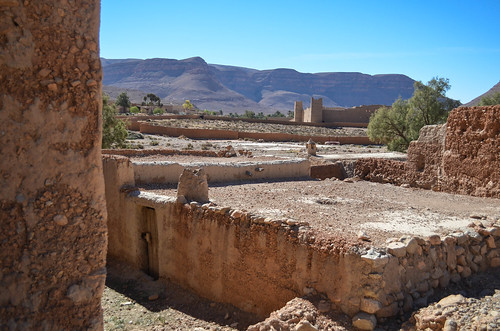
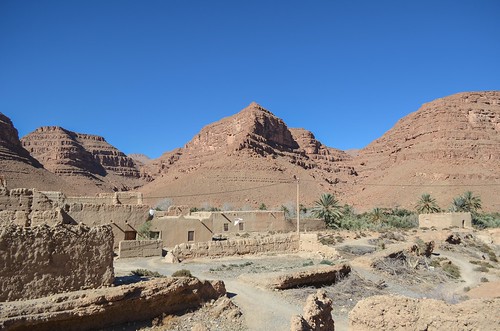
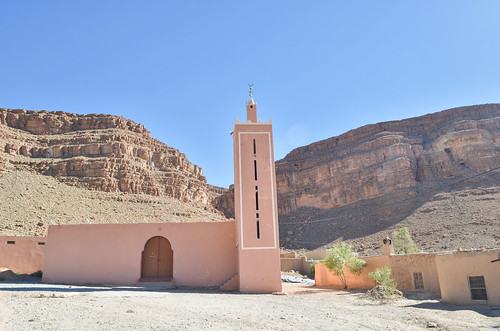
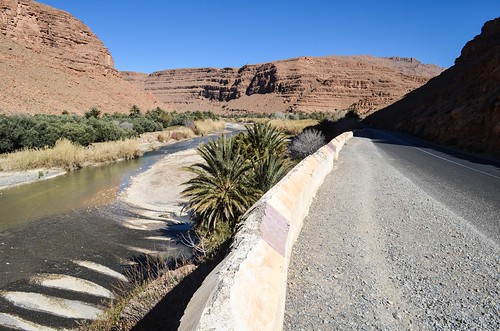

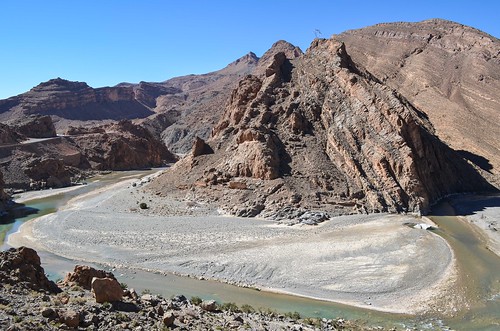

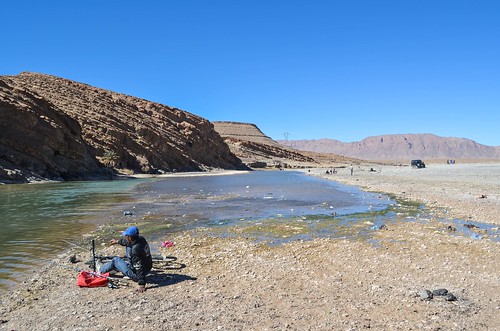
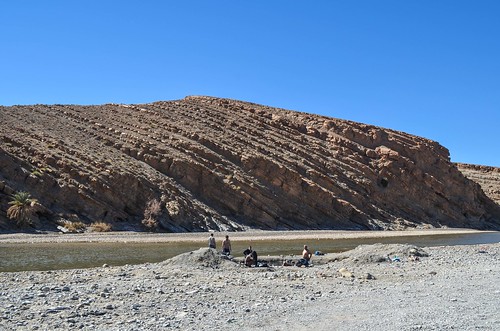
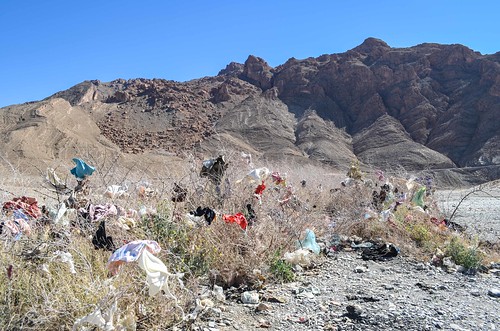

The experience at the indoor bath of Moulay Ali Cherif is completely different from the outdoor pool. It is, like Moulay Yacoub, a renowned place for people to heal rheumatism and skin diseases. The entrance is 10 dh but no water buckets are given, they must be rented to the small shops outside for another 10 dh. On the other hand, the pool by the river is free (but “secret” !). The indoor pool is at the center of the hammam-like room. No one is inside the pool, and the reason is the water: burning hot. I can’t leave my feet in it for 2 seconds. It is not at all like a pool where people soak, and I don’t understand the purpose.
The people take the boiling water to wash on the side of the pool, and then watch the water. Then I see the bravest men jump inside for a few seconds only. The water is mechanically pumped and poured into the pool, but it doesn’t carry the sulfuric smell. I understand the technique of the locals: on a very shallow area of the pool, one should enter the pool, sit at the bottom, raise feet and hands (the body parts that easily feel burnt), stay until it’s unbearable, and jump out looking like a steamed lobster.
The pump stops working for 10 minutes and I take the opportunity to do the ritual a few times. Zaid said the water is at 52°C. I can’t tell but would say for sure above 46°C. I am not sure how good this is to the body, but it is certainly less relaxing than soaking in a reasonably hot pool. My skin stays pink for a while until I get out for a tea and the cycling ride back.
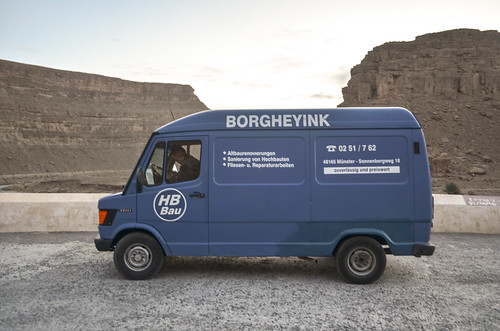
The road along the Ziz gorges is perfect for its little traffic. I buy a cheche to cover my head and face and move on towards the desert. At the end of the gorges, I will be directly in the flat of the Sahara.

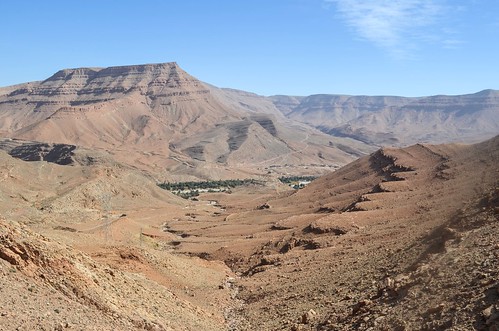
Errachidia is the big town of the region, with almost 100’000 inhabitants. It feels however like a big village, without any tall building and a small city center. The wide roads and gates at the entrance of blocks give it an administrative look. I also heard that the presence of the army is important in the city.

It is the worse time of the week for going shopping: a Friday at 1 pm. I find however a kind of supermarket selling occidental treasures, i.e. the expensive and tasty brands, to make a refill of decent chocolates.

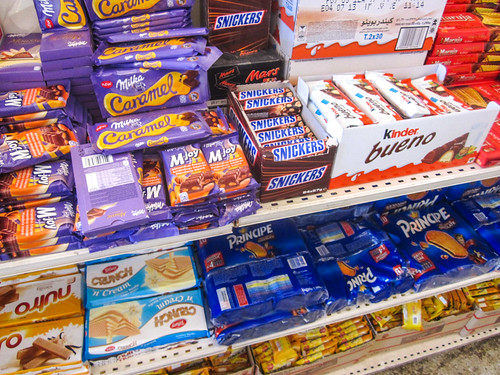
I see many bicycles in town, which is easy to ride because of the very large streets. At the exit, I even see a sign FOR bicycles!
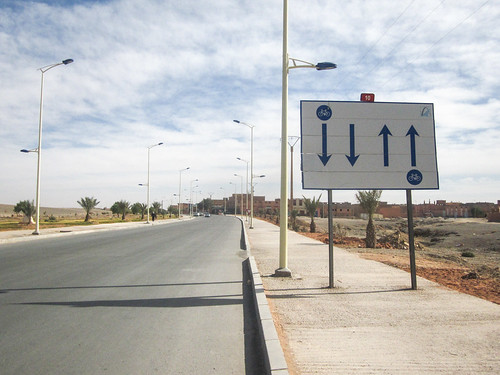
The road after Errachidia is the desert. I was thinking at first going west directly towards the Atlantic coast. Then I changed my mind to go down until Erfoud before turning west. Then, as the sand dunes of Merzouga were not far anymore, I decided to cycle till there.

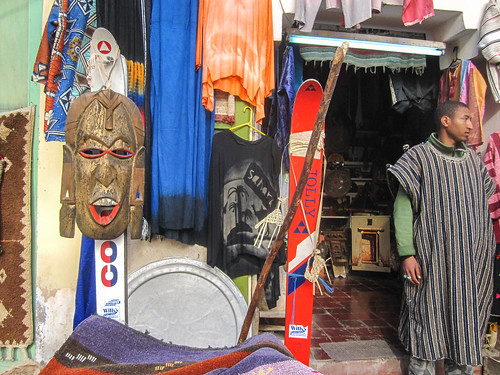
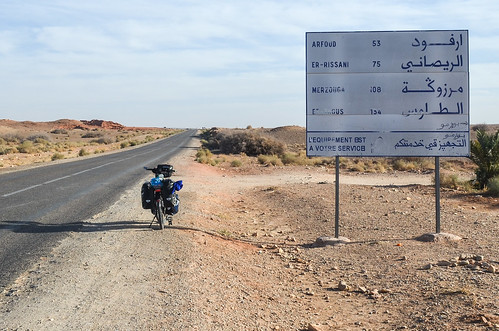

The road is going to be pretty boring with those kilometers of desert, but suddenly changes to go down a big crack in the ground. This is the same Ziz river, continuing south after the gorges, but now bordered with palm trees.
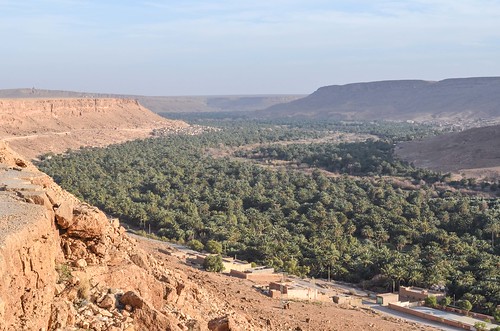
It’s a nice change and I can go and hide into the palm trees for the night.
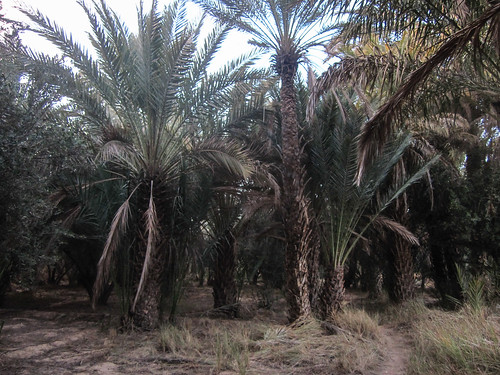
I get up with 4°C in my tent. The morning is chill. It’s however hot when I stop cycling, so the best is when I am on the bike.

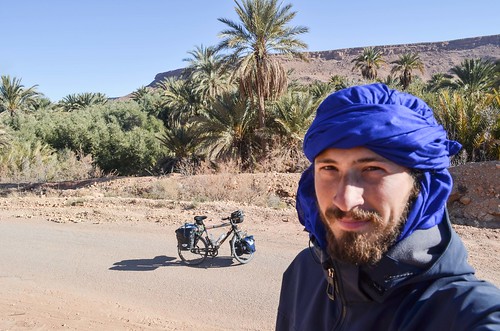


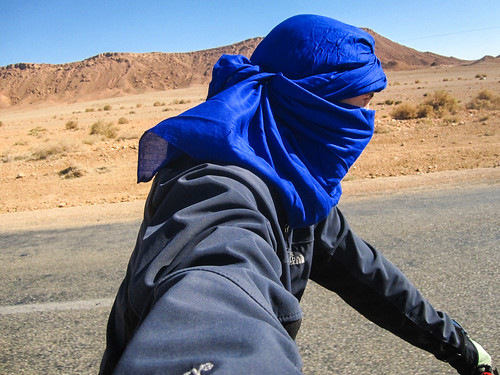
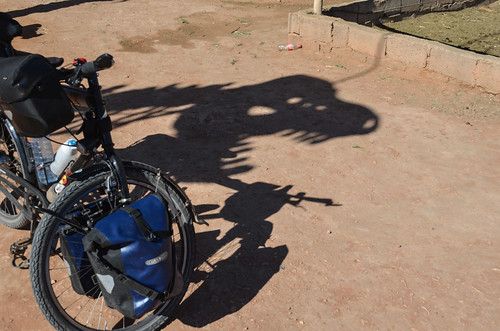
I make a break by a strange sight a hundred meters from the road: a big water jet in a desertic area.

This spring has been throwing water in the sky for over 20 years. It contains too much iron and sulfur, making it improper for drinking and even farming. The ground has a nice color but little vegetation is growing around.

I would not be surprised if the Sahara had big pools of water everywhere under the sand. The local guy selling souvenirs nearby tells me that the machines is looking for “good” water in shallower depths than where the iron water comes from.
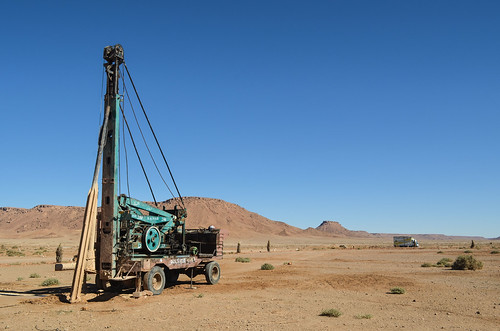
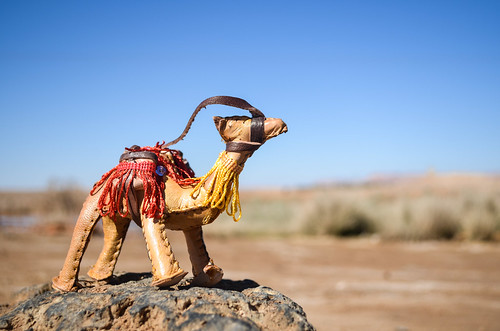
Once in Erfoud, the last relatively big town before the sand, I find many bicycles, and a cellphone shop that finally accepts to swap my Sunrise-SIM-locked basic phone. I was told it’s a model that doesn’t take an easy unlocking method for 20 or 30 dh, so I swapped it for another unlocked Nokia.

The road until Merzouga is still long, longer than I thought. I have a slight wind against me, and for only distraction to watch the milestones by the road. The sand dunes of Merzouga are popular and a very touristy destination. It is where people come to do a camel trek of a few nights in the dunes and camp in the wild. Most of the desert being an unattractive and unlimited field of stones, the beauty of Merzouga stands out and attracts travelers from the cities of Fès and Marrakech, one or two days drive away.


I see the sand dunes as soon as I leave Rissani. That is 30 km of straight road before reaching them.
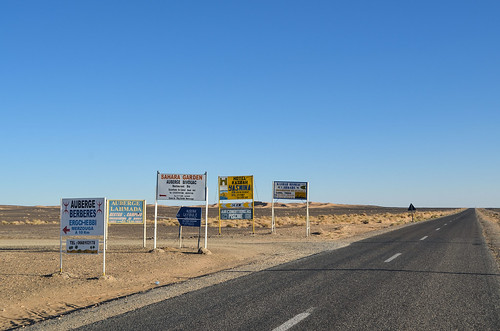
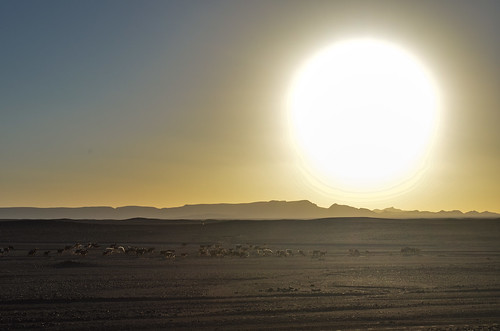
I reach Merzouga and follow the touristy signs to find a place for the night. The area seems to be a village of hotels. Called kasbah, riad or ksar, they are all high-end places just by the dunes. It is almost fun to bargain at those places, because the prices make quickly huge drops. But they never reach as low as the hotel usually situated behind the central mosque. And I am lucky to find the auberge of the Belkacem brothers there, simple and cheap, to rest for two days and walk a bit in the sand dunes.
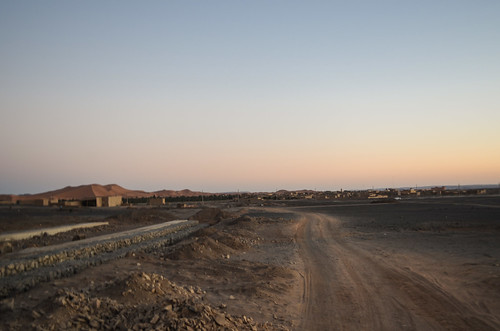
This is the dead season and the small town center of Merzouga is also dead. Just one café-restaurant, a few groceries shop that run out of bread in the evening and unconvincing tourist shops.
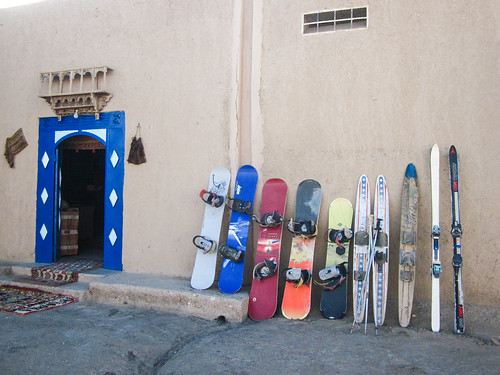
Yet, it is a special experience of climbing the dunes, the sand-hating bike carefully left home. The Algerian border is 50 km away, Timbuktu is 52 days of camel ride away, the motorbikes are playing in the sand, but there’s always a spot where the immensity of the desert can be felt.
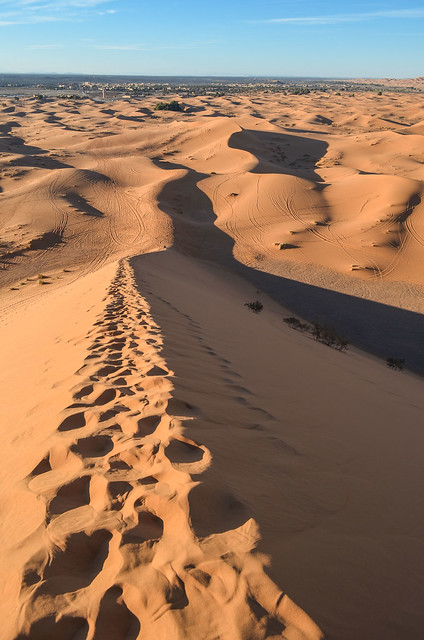
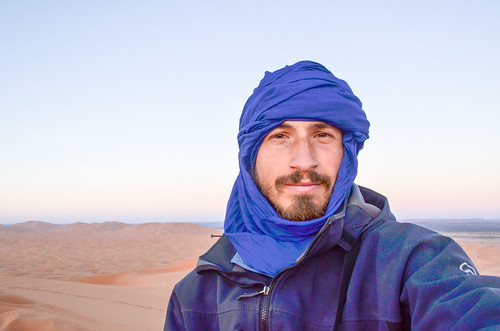
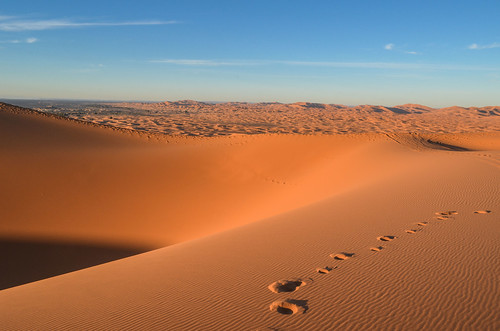
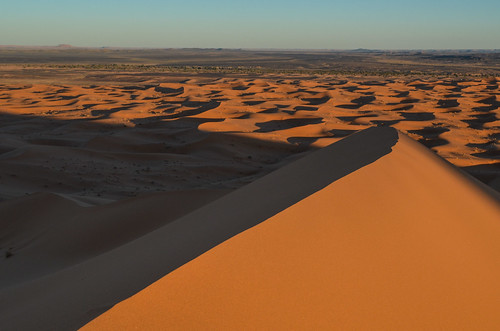
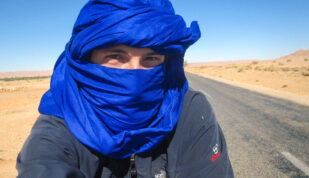
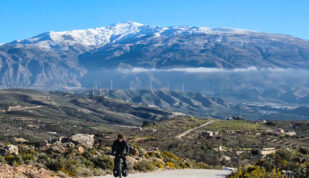

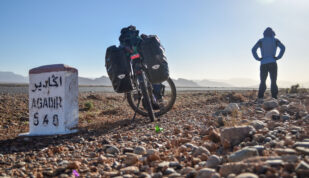

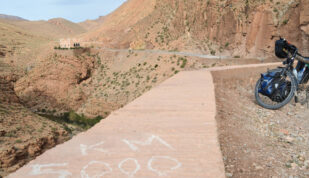
Amazing sand dunes… utterly impressed like always… need to get away from boring Switzerland even though I now moved to the biggest city CH can offer… 😉
Looks a bit like the dunes in Oman… 🙂 watch the camels 😉
Hugs